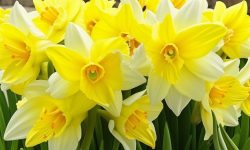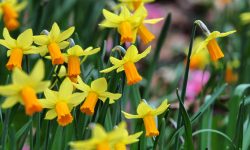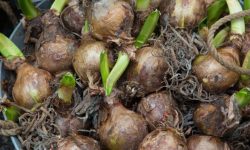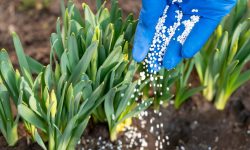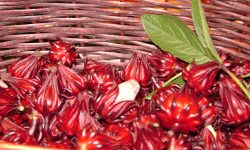Hyacinths bring a burst of vibrant color and sweet, lingering fragrance that can instantly lift any indoor space. While often seen in outdoor gardens, these springtime favorites also thrive indoors with the right care and attention—making them a perfect choice for brightening your home during cooler months.
Learning how to look after hyacinths indoors isn’t just about keeping them alive—it’s about encouraging lasting, radiant blooms that fill your space with beauty and scent. Whether you’re a seasoned plant lover or a curious beginner, this guide will help you grow hyacinths indoors with confidence and joy.
Choosing the Right Hyacinth Bulbs for Indoor Growth
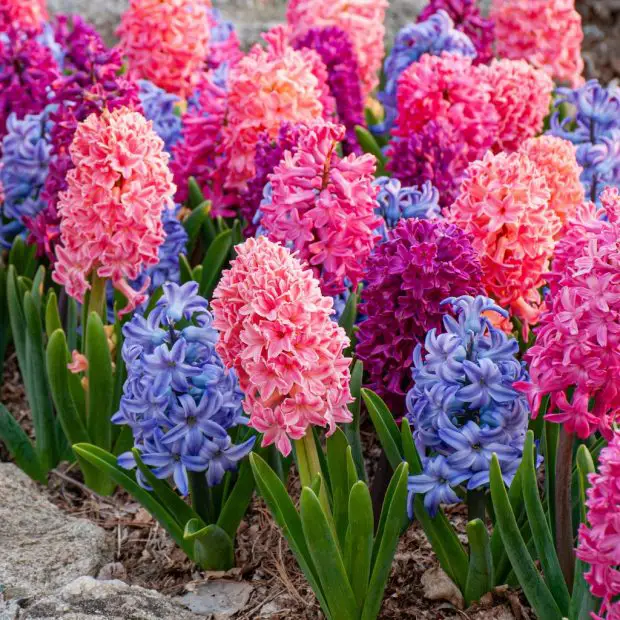
Selecting the right hyacinth bulbs is the foundation for successful indoor blooming. Unlike bulbs grown outdoors, indoor hyacinths require bulbs that have been specially prepared to mimic the cold winter period they naturally experience. These are known as pre-chilled or prepared hyacinth bulbs, and they’re treated with a cold dormancy phase before being sold, making them ready to grow and bloom indoors without needing extensive cold storage at home.
When shopping for bulbs, always choose large, firm, and unblemished specimens. The size of the bulb matters—a larger bulb usually means it has stored more energy, resulting in fuller flower spikes and longer bloom time. Avoid bulbs that feel soft or show signs of mold, rot, or mechanical damage, as these are less likely to thrive indoors and may not flower at all.
Additionally, consider the variety and color of hyacinths that suit your indoor space. Popular indoor varieties like ‘Delft Blue’, ‘Carnegie’, or ‘Pink Pearl’ are not only visually striking but also known for their strong fragrance. If fragrance is a priority, opt for traditional varieties with intense scents, but if you have a smaller or enclosed space, lightly scented cultivars may be a better fit.
For optimal indoor results, purchase bulbs from reputable nurseries or online suppliers that clearly indicate the bulbs are suitable for forcing. Investing in high-quality, prepared bulbs sets the stage for vibrant, long-lasting indoor blooms that brighten your home throughout the colder months.
Preparing Hyacinth Bulbs Before Planting
Proper preparation is a crucial step to ensure hyacinths bloom beautifully indoors. Even if you’ve purchased pre-chilled or “prepared” bulbs, giving them additional cold exposure at home can significantly improve their performance, especially if you plan to stagger blooming times for a longer display.
Hyacinth bulbs naturally require a cold dormancy period to initiate flower development. This chilling process mimics winter conditions and signals the bulb to start its internal growth cycle. For the best results, place your bulbs in a cool, dark environment—ideally between 35°F to 48°F (1.5°C to 9°C)—for 8 to 12 weeks. The easiest place to do this is in a refrigerator. However, take care to keep bulbs away from ripening fruits like apples or bananas, which emit ethylene gas that can inhibit blooming or damage the flower bud.
If storing multiple bulbs, place them in a breathable paper bag or mesh sack, and make sure there’s enough air circulation to prevent mold. You can also keep the bulbs in a shallow tray lined with dry peat moss, sawdust, or vermiculite to help regulate humidity.
During this chilling phase, the bulbs do not need water or soil. Their only requirement is consistent cold temperatures and darkness. After the cold period is complete, and you’re ready to plant, inspect each bulb carefully. Discard any that feel soft or have visible mold. Healthy, properly chilled bulbs will have a firm texture and visible root nubs at the base—signs they’re ready to burst into growth when moved to warmer, brighter conditions.
Taking the time to chill your hyacinth bulbs correctly ensures synchronized blooming, strong flower stalks, and vibrant color—key ingredients for a stunning indoor floral display.
Planting Hyacinths in Indoor Containers
When planting hyacinths indoors, start by selecting a container with good drainage to prevent water buildup around the bulbs. Fill it with a lightweight, well-draining potting mix, such as a mix containing perlite or sand. Position the bulbs so that the pointed tip faces upward and the top third of each bulb remains above the soil surface. This helps prevent rot and mimics how they naturally grow.
Space the bulbs close enough to create a full display, but ensure they don’t touch each other or the sides of the pot, which can encourage mold or rot. After planting, water lightly and place the container in a cool, dark location (around 40–50°F or 4–10°C) for 8–12 weeks to allow for root development and proper chilling.
Once the chilling period ends, move the pot to a bright, cool indoor spot, such as near a window with indirect sunlight. Continue to water moderately—keeping the soil just slightly moist—and rotate the pot occasionally to encourage upright, even growth. With proper care, your hyacinths will reward you with fragrant, colorful blooms.
Ideal Light Conditions for Indoor Hyacinths
Light plays a crucial role in the healthy development and blooming of indoor hyacinths. After the initial rooting phase in darkness, hyacinth bulbs require a gradual introduction to light to avoid stress and promote strong, upright growth.
Once the green shoots have emerged and reached about 2 inches tall, move the container to a location with bright but indirect sunlight. A north- or east-facing windowsill is often ideal, as it provides gentle morning light without the intensity of direct afternoon sun. Harsh, direct sunlight at this stage can cause the leaves to scorch or the flower spikes to develop unevenly, resulting in weak or leaning stems.
As the shoots grow taller and buds begin to form, you can gradually expose the plants to stronger light to encourage sturdy stem growth and vibrant flower color. A south-facing window filtered with a sheer curtain works well during the colder months, offering sufficient light without overheating the plants.
To ensure balanced development, rotate the pot every few days. This helps prevent the plant from leaning toward the light and encourages a straight, symmetrical growth pattern. If natural light is limited—especially during winter—consider supplementing with grow lights. Position the light about 6 to 12 inches above the plant and provide 12 to 14 hours of light per day to mimic natural daylight conditions.
Maintaining the right light intensity and duration not only supports robust foliage and flower formation but also extends the bloom period. With proper lighting, your indoor hyacinths will flourish into healthy, fragrant showpieces that brighten any room.
Proper Watering Techniques for Indoor Hyacinths
Watering hyacinths indoors requires care, as too much moisture can lead to bulb rot while too little can stunt growth. Right after planting, water lightly to settle the soil. During the rooting phase, keep the soil slightly moist, checking regularly to avoid letting it dry out completely. However, avoid soaking the soil, especially when roots are still forming.
As the plant grows and begins to bloom, maintain a consistent but moderate watering routine. Water only when the top inch of soil feels dry, and always apply water at the base of the plant to keep leaves and flowers dry, reducing the risk of mold.
Good drainage is essential. Make sure your container has drainage holes, and empty any excess water from saucers immediately. If using a decorative pot without drainage, water very cautiously and in small amounts.
Also consider room conditions—warm, dry air will require more frequent watering, while cooler spaces slow down evaporation. With consistent attention, proper watering supports strong growth and vibrant, long-lasting indoor blooms.
Temperature and Humidity Control for Optimal Growth
Fertilizing Indoor Hyacinths
Although hyacinth bulbs contain enough nutrients to bloom once, light fertilization can support healthier growth and more vibrant flowers. Use a balanced liquid fertilizer (10-10-10 or 20-20-20) at half strength when green shoots appear. Apply a second dose when flower buds begin to form to boost bloom quality.
Avoid over-fertilizing, as it can cause excessive leaf growth or burn the roots. Always water before or after feeding to protect the plant. There’s no need to fertilize during dormancy or after flowering if you plan to discard the bulb.
If you’re keeping the bulb for replanting outdoors, continued light feeding post-bloom helps replenish its energy stores. For hyacinths grown in water, don’t add fertilizer, as it may promote algae and harm the bulb. When used appropriately, fertilizer helps indoor hyacinths thrive and may even prepare them for future growth.
Supporting Hyacinth Blooms Indoors
Hyacinths grown indoors can sometimes struggle to support their heavy flower spikes, especially in low light or warm temperatures. Without proper support, stems may lean or flop over, reducing their visual appeal. To keep blooms upright, it’s important to manage light, temperature, and physical support.
Ensure your hyacinths get bright, indirect sunlight, and rotate the pot regularly so the stems grow straight rather than toward one side. Lack of light often leads to weak, leggy growth. Keeping the plant in a cool environment, around 60°F (15°C), also helps produce sturdier stems and slows excessive elongation.
If the blooms are still heavy, insert small stakes or supports into the soil, tying stems gently with soft twine or plant ties. Place stakes carefully to avoid damaging the bulb. Alternatively, group hyacinths closely together or use a taller container to offer natural support from the sides.
With even light, cool temperatures, and subtle staking, your indoor hyacinths will remain upright and vibrant, making a beautiful, long-lasting display.
Extending the Bloom Period
To enjoy hyacinth blooms indoors for as long as possible, managing environmental conditions is key. Once the flowers begin to open, their lifespan is largely influenced by temperature, light, and care practices. Cooler temperatures help prolong the bloom, while excessive warmth will speed up wilting. Aim to keep your hyacinths in a room around 55°F to 65°F (13°C to 18°C), especially during the flowering stage.
Avoid placing them near heat sources, direct sunlight, or in rooms with poor air circulation. Bright, indirect light is still important for keeping the plant healthy, but direct exposure during peak bloom can cause the flowers to fade more quickly. If you have multiple plants, rotating them between cooler and warmer areas in your home can help stagger blooming times and extend your overall display.
Another way to preserve blooms is by removing spent flowers promptly. Snipping off faded flowers prevents the plant from channeling energy into seed production and helps maintain the bulb’s strength for potential replanting. Be sure not to remove the green leaves, as they continue photosynthesis and help recharge the bulb.
You can also group hyacinths with other cool-loving indoor flowers to create a microclimate that supports longer-lasting blooms. With proper temperature control and attentive care, your hyacinths can remain colorful and fragrant indoors for up to two weeks or more, offering extended beauty throughout the season.
Post-Bloom Hyacinth Care Indoors
Once your indoor hyacinths finish blooming, it’s important to care for the plant properly to help the bulb recover. Begin by removing the spent flower stalk with clean scissors, but leave the green foliage intact. The leaves continue to photosynthesize, storing energy in the bulb for future growth.
Continue watering lightly and regularly while the leaves are green, keeping the soil slightly moist but never soggy. Avoid fertilizing at this stage unless you’re planning to replant the bulb outdoors later.
When the leaves naturally turn yellow and die back, stop watering. This signals that the bulb is entering dormancy. At this point, you can gently remove the bulb from the soil, clean off any excess dirt, and store it in a cool, dry, and dark place if you plan to replant it in your garden in the fall. Hyacinths forced indoors rarely rebloom well inside the following year, but they often adapt better when replanted outdoors.
With proper post-bloom care, your hyacinth bulbs can be given a second life in the garden, rewarding you with blooms in seasons to come.
Common Problems When Growing Hyacinths Indoors
Indoor hyacinths are generally easy to grow, but a few common issues can affect their health and blooms. Bulb rot is often caused by overwatering or poor drainage—use well-draining soil and water only when the top inch is dry.
Yellowing leaves may result from low light, temperature stress, or excess moisture. Keep plants in bright, indirect light and avoid drafts. Floppy stems usually indicate insufficient chilling or lack of light; ensure bulbs are pre-chilled for 8–12 weeks and get enough light as they grow.
Mold on the soil surface can appear in overly damp or humid conditions. Improve airflow and reduce watering to fix it. Lastly, hyacinth fragrance can be strong—move the plant to a well-ventilated area if the scent feels overwhelming.
Addressing these issues early helps keep your indoor hyacinths healthy and beautiful.
Encouraging Fragrance Indoors
To fully enjoy the delightful scent of hyacinths indoors, it’s important to create the right environment and choose the most fragrant varieties. Hyacinths naturally release a strong, sweet perfume, but some cultivars—like ‘Delft Blue’, ‘Pink Pearl’, or ‘Woodstock’—are especially known for their rich, lingering aroma. When fragrance is a top priority, opt for these varieties during bulb selection.
Place blooming hyacinths in areas with gentle air circulation to help spread their scent throughout the room. Avoid overly warm spots, as high temperatures can cause the flowers to fade more quickly and reduce their aromatic intensity. A room temperature of around 60–65°F (15–18°C) is ideal to maintain both bloom longevity and fragrance strength.
Position the plants in bright but indirect sunlight, which encourages healthy blooms without overheating the bulbs. You can further enhance the fragrance by grouping multiple pots together, creating a more concentrated scent effect—perfect for entryways, living rooms, or bedrooms.
With the right placement and variety selection, indoor hyacinths can fill your home with natural perfume that lasts for days, bringing both visual charm and aromatic pleasure.
Choosing Decorative Containers for Display
The right container enhances both the beauty and function of indoor hyacinths. Choose pots that are at least 6 inches deep and have good drainage to prevent bulb rot. If using a decorative pot without holes, place a plastic grower pot inside for easier watering.
For a more elegant display, consider ceramic, stoneware, or vintage-style clay pots that complement your home decor. Transparent glass forcing vases are also popular, especially for showcasing hyacinths grown in water, offering a clean, modern look with visible roots.
Group several containers together for a fuller display or use a wide, shallow bowl for a clustered centerpiece. Whatever style you choose, ensure the container supports the bulb’s health while adding charm to your indoor space.
Growing Hyacinths in Water Indoors
Growing hyacinths in water is a beautiful, soil-free method that lets you enjoy both the flowers and their developing roots. Start with a glass forcing vase or a narrow-necked jar that supports the bulb just above the water line. Fill the vase so the water sits just below the base of the bulb—the roots will grow down into the water, but the bulb should stay dry to prevent rot.
Before placing the bulb, it should be pre-chilled for 8–12 weeks at 35–48°F (2–9°C) in a dark location like a refrigerator. Once roots begin to grow, move the vase to a bright, cool spot with indirect light. Turn the vase every few days to encourage upright growth.
Change the water every 5–7 days to keep it fresh and free of bacteria. No fertilizer is needed, as bulbs contain all the energy required to bloom. With this method, you’ll get a striking floral display and the added visual interest of crystal-clear roots—perfect for brightening any room.
Seasonal Timing for Indoor Hyacinth Blooming
Storing Bulbs After Indoor Blooming
Once your indoor hyacinths have finished blooming and the foliage has completely died back, you can store the bulbs for future use—especially if you plan to plant them outdoors in the fall. Start by gently removing the bulbs from the soil or forcing vase. Shake off excess soil and allow the bulbs to air-dry in a cool, shaded area for a few days until fully dry.
Inspect the bulbs for any signs of rot or mold, and discard any that feel soft or damaged. Once dry, store healthy bulbs in a paper bag, mesh sack, or cardboard box with good air circulation. Keep them in a dark, dry, and cool place—ideally between 50–60°F (10–15°C)—to prevent premature sprouting or fungal growth.
It’s important to note that hyacinths forced to bloom indoors often don’t flower as vigorously again the next year if reused indoors. However, they can still be planted outdoors in fall, where they may recover and bloom naturally in subsequent seasons.
Label your stored bulbs by variety and date, especially if you’re handling multiple batches. With proper storage, your bulbs can have a second life in the garden, bringing beauty and fragrance to your landscape in the years to come.
Frequently Asked Questions (FAQ) About Indoor Hyacinth Care
How long do indoor hyacinths bloom?
Indoor hyacinths typically bloom for 2 to 3 weeks, depending on room temperature and light conditions. Cooler temperatures and indirect sunlight can help extend the bloom period. Once the flowers begin to fade, deadhead them promptly to conserve the bulb’s energy for the next cycle.
Do hyacinths need to be chilled before blooming indoors?
Yes, hyacinth bulbs require a cold treatment of 8–12 weeks at 35–48°F (2–9°C) to simulate winter dormancy. Without this chilling period, the bulbs may not produce flowers. You can chill them in a refrigerator, but keep them away from ripening fruits, which release ethylene gas that can damage the bulbs.
Can I grow hyacinths in just water?
Absolutely. Hyacinths can be successfully grown in glass forcing vases with water. The bulb should rest above the water line, with only the roots submerged. This method allows you to enjoy both the blooms and visible root growth. Keep the water clean and change it every 5–7 days for best results.
What should I do with my hyacinth after it finishes blooming indoors?
Once the flowers fade, allow the leaves to die back naturally. This helps the bulb store energy. Afterward, you can store the bulb in a cool, dry, dark place and replant it outdoors in the fall. Indoor-forced bulbs usually don’t bloom well again indoors, but they may rebloom outdoors after a recovery period.
Why is my indoor hyacinth flopping over?
Indoor hyacinths may droop due to insufficient light, excess warmth, or heavy flower heads. To prevent flopping, ensure they receive bright, indirect light and are kept in cooler rooms (around 60°F or 15°C). You can also use discreet supports like floral stakes or tie them gently to prevent bending.
Final Thoughts on Indoor Hyacinth Care
Caring for hyacinths indoors requires attention to detail, from selecting the right bulbs to providing the appropriate temperature, light, and water conditions. When done correctly, the reward is a stunning display of colorful, fragrant blooms that brighten any indoor space. By understanding the lifecycle of hyacinths and their specific needs, you can extend their blooming period and enjoy their beauty year after year. With patience and consistent care, hyacinths can become a cherished part of your indoor garden collection, bringing joy and elegance to your home each season.

